Last Updated on: 20th June 2025, 12:21 pm
Have you recently looked at your payslip and noticed the letters “BR” next to your tax code? If so, you might be wondering why you’re being taxed more than expected or why your take-home pay seems lower.
The tax code BR is commonly applied when you have multiple sources of income or when HMRC does not yet have the full information about your employment. It stands for Basic Rate, and it means you’re taxed at 20% on all of your income from that job, without a personal allowance applied.
Understanding this tax code is crucial because it can lead to overpayment of tax if applied incorrectly. You’ll also want to be sure you’re not being unfairly taxed on income that should benefit from a personal allowance.
In this blog, you’ll discover everything you need to know about tax code BR, from why you’ve been assigned it to how it impacts your salary and what steps you can take to fix it.
What Is Tax Code BR and When Is It Used?

Tax code BR is short for Basic Rate, and it’s used when your income is taxed at a flat rate of 20% from the first pound you earn, without applying the tax-free personal allowance.
This is the default rate applied when HMRC believes your tax-free allowance is being used elsewhere or doesn’t have full records about your employment.
This tax code most commonly appears in specific scenarios:
- You have more than one job.
- You’ve started a new job and haven’t submitted your P45.
- You’re receiving a pension and a salary at the same time.
- You recently returned to PAYE after being self-employed.
In these cases, HMRC assigns the BR code because they assume your personal allowance has already been used in your main source of income.
While this may be correct for second jobs, it’s not ideal if it’s applied by mistake. Since the BR code skips the personal allowance entirely, it’s important to verify its accuracy if you see it.
It’s crucial to check your payslips regularly and take action if your income is being taxed too heavily under BR.
Why Have You Been Put on a BR Tax Code?
You may be placed on a BR tax code if HMRC believes your tax-free personal allowance is already being applied to another job or income source. It’s a precautionary tax measure used in situations where there’s incomplete information about your earnings.
The most common reasons you might be on the BR tax code include:
- You started a second job, and your main job uses the standard tax code (e.g., 1257L).
- You began a new job but did not provide a P45 or starter checklist.
- You receive both a pension and a salary, so HMRC assumes your allowance is used for the pension.
- You returned to employment from self-employment, and HMRC hasn’t updated your records.
- Your employer doesn’t yet have the full tax information from HMRC.
The BR code is a “safe” option from HMRC’s perspective, it ensures that tax is collected at the basic rate while the right code is being determined.
However, if your income from a job is your only or main income, this tax code could result in overpayment. It’s your responsibility to ensure your tax code is correct to avoid losing money unnecessarily.
How Does the BR Tax Code Affect Your Pay?
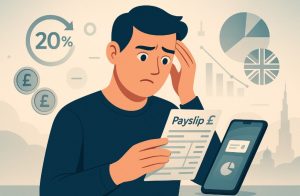
If you’ve noticed a difference in your take-home pay, the BR tax code could be the reason. Here’s how it impacts your earnings. The BR code does not apply the personal allowance, which means every pound you earn is taxed at 20%, starting from £1.
How Much Tax Do You Pay on a BR Code?
- No personal allowance
- 20% tax applied on all income
- No consideration of tax bands or allowances
Example of Tax Deduction Under BR Tax Code
Let’s break it down in a comparison:
| Tax Code | Personal Allowance | Tax Rate | When It’s Used |
| BR | £0 | 20% | Second job, no P45, missing info |
| 1257L | £12,570 | 20% above allowance | Standard single income job |
Imagine you earn £30,000 from a job with a BR tax code.
You would be taxed:
- Entire £30,000 × 20% = £6,000 in tax
With a 1257L code, only earnings over £12,570 would be taxed, resulting in:
- £30,000 – £12,570 = £17,430 × 20% = £3,486
That’s a difference of £2,514, which you might be eligible to reclaim if you’re wrongly assigned BR.
Being taxed under BR can significantly reduce your net pay. That’s why identifying and fixing it is vital for your financial health.
Is BR an Emergency Tax Code?
While it may seem similar, BR is not technically an emergency tax code, though it’s often used in emergency-like situations.
Emergency tax codes like 1257L W1/M1 or 0T are designed for temporary use when HMRC is awaiting full income details. The BR code, on the other hand, is used more consistently when it’s assumed that your personal allowance is already in use elsewhere.
You may find yourself on a BR tax code in these emergency situations:
- You’ve started a new job but didn’t submit a P45.
- You have multiple jobs or pensions, and HMRC hasn’t allocated the personal allowance correctly.
- Your employer hasn’t received your full tax code from HMRC.
Although not officially an emergency code, BR is treated as one in practice when HMRC doesn’t have accurate income data.
It’s important to check your tax documents and communicate with HMRC or your employer if you see BR and it doesn’t apply to your circumstances.
How Do You Know If You’re on a BR Tax Code?

It’s important to monitor your tax code regularly to avoid overpaying tax. There are several easy ways to check if you’re on a BR tax code.
How to Read Your Payslip?
Your payslip will clearly display your tax code next to your personal details or salary breakdown. If you see BR, this confirms you are being taxed at the basic rate on all your income from that job.
HMRC Notification Methods
HMRC typically sends out a PAYE Coding Notice by post or digitally to your Personal Tax Account. This outlines your current tax code and how it has been calculated.
Check Your Tax Code Online
You can check your tax code by:
- Visiting HMRC’s income tax checker
- Logging into your Personal Tax Account
- Reviewing details for each job or pension
If your code seems wrong or if BR appears on your payslip unexpectedly, it’s essential to act promptly. Getting the correct code ensures you’re not taxed unfairly or missing out on your rightful allowance.
Can You Change Your BR Tax Code?
Yes, if you think your BR tax code is incorrect, you can change it by contacting HMRC. It’s your responsibility to make sure your tax code reflects your actual income situation.
Steps to Contact HMRC
Here’s a simplified guide:
| Action Step | Details |
| Call HMRC | 0300 200 3300 (Mon-Fri, 8am–6pm) |
| Use HMRC online account | Check and update |
| Provide correct documents | See below |
What Documents or Info You Need?
- Your P45 or Starter Checklist
- Details of all jobs and pensions
- Recent payslip or P60
- National Insurance number
Time It Takes to Update
Once you contact HMRC, the update process can take 1 to 4 weeks. If a new tax code is issued, your employer will automatically apply it to future pay periods.
Correcting your tax code can also trigger a tax refund, so it’s a win-win situation when resolved promptly.
Will You Get a Refund If You’ve Overpaid on BR Code?
If you’ve been wrongly assigned a BR tax code, you might have overpaid tax, and yes, you can get a refund.
When Refunds Are Applicable?
You’re eligible for a refund if:
- BR was applied in error
- You only had one job, and the personal allowance wasn’t used
- Your income was wrongly taxed due to missing data
How to Claim a Tax Refund?
- Check your tax code and earnings online
- Contact HMRC or your employer
- Submit a claim using a P800 form or online portal
Automatic vs. Manual Claims
In many cases, HMRC will issue an automatic refund if they identify the error. However, it’s wise to monitor your payslips and initiate the process if the system doesn’t flag it.
Refunds are usually paid directly to your bank account or through your payroll in your next payslip. This ensures you’re not penalised for a tax code mistake.
How to Avoid Being Put on the BR Tax Code Again?

Avoiding the BR tax code in the future starts with keeping your employment details accurate and up to date. This helps HMRC assign the correct tax code right from the start.
Here’s how you can stay in control:
- Always provide a P45 to your new employer
- If no P45, complete a Starter Checklist (previously P46)
- Regularly check your Personal Tax Account
- Inform HMRC promptly of any job or income changes
- Review your payslips to ensure your tax code hasn’t changed unexpectedly
By being proactive, you reduce the risk of being incorrectly taxed under BR again. Staying informed is your best defence.
What Are the Alternatives to the BR Tax Code?
The BR code is just one of several that HMRC might assign, depending on your circumstances. Understanding other tax codes can help you determine whether you’re on the right one.
Here are some common alternatives:
- 1257L: Standard tax code that applies the full personal allowance of £12,570
- D0: All income is taxed at 40%, typically for high earners or second jobs
- D1: All income is taxed at 45% for additional rate taxpayers
- 0T: No personal allowance applied, often used when no P45 is provided
- NT: No tax is deducted, used for certain exemptions
Each of these tax codes serves a purpose based on your income, job status, or employer’s information. BR is common, but it’s not always the correct one.
Summary Table: BR Tax Code Key Facts
| Feature | Details |
| Tax Code | BR |
| Annual Tax-Free Allowance | £0 (No personal allowance applied) |
| Applies To | Second job, additional income, or when HMRC lacks full info |
| Letter ‘BR’ Meaning | Basic Rate |
| Used With | PAYE system |
| Common Usage | Secondary employment, no P45 provided, or pension alongside salary |
| Changed Recently? | No major changes, still in use in 2025-2026 tax year |
| Emergency Code Format | Not an emergency code, but used in similar temporary situations |
| Who Assigns It | HMRC based on income information and allowance usage |
| Can It Be Wrong? | Yes, especially if you only have one job or your income details are outdated |
Conclusion
If you’re currently on a BR tax code, don’t panic but do act. While it’s not necessarily incorrect, being taxed without your personal allowance can impact your finances if applied wrongly. The key is knowing why you’ve been placed on BR and how to address it.
Always check your payslips, communicate any changes to HMRC, and take action if something looks off. It’s possible to correct errors, claim refunds, and even prevent the issue from happening again. Staying on top of your tax codes ensures you take home what you rightly deserve.
FAQs
What income level does the BR code apply to?
The BR code applies to all income levels where no personal allowance is available. It taxes the full amount at 20%, regardless of income band.
Can you stay on BR tax code for a full tax year?
Yes, but only if it’s correctly applied to a secondary income source. If incorrect, it should be corrected as soon as possible.
Is BR code applied to pensions or only salaries?
BR can be applied to both, especially when pensions are treated as secondary income. This ensures the personal allowance is used elsewhere.
Do students get put on BR tax codes?
Students may be placed on BR if they have multiple jobs or fail to provide full tax information. It’s not student-specific but based on HMRC data.
How do employers fix incorrect tax codes?
Employers apply updated codes provided by HMRC. If an error is found, the employee must contact HMRC to trigger a correction.
Will being on a BR code affect my Universal Credit?
Potentially, as it may reduce your net income. Lower net income might increase your Universal Credit entitlement depending on your situation.
Can I get a tax refund if I leave the UK on a BR code?
Yes, if you overpaid tax under BR before leaving the UK, you can claim a refund by submitting a P85 form and your final payslips.
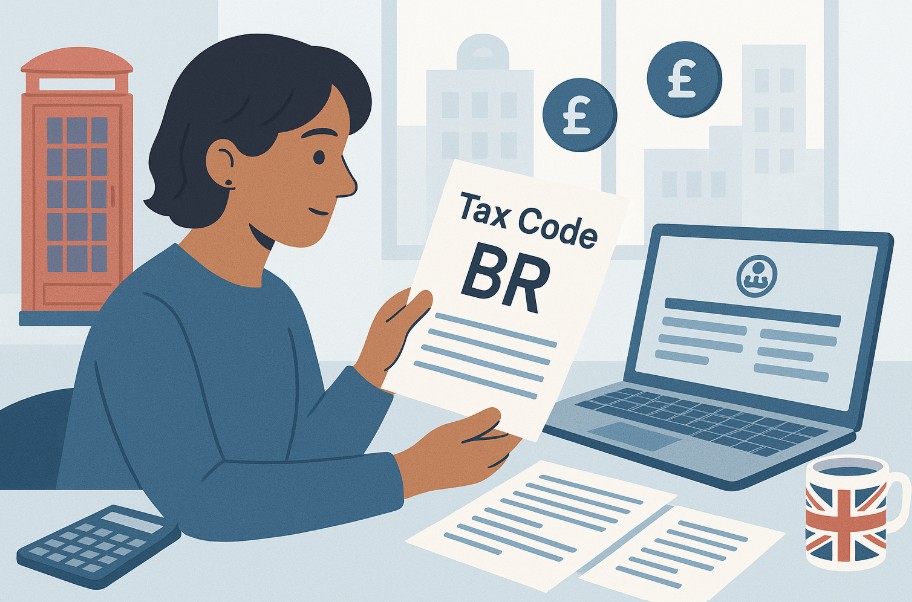












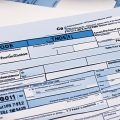
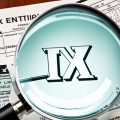



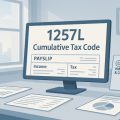

No Comments
Leave a comment Cancel